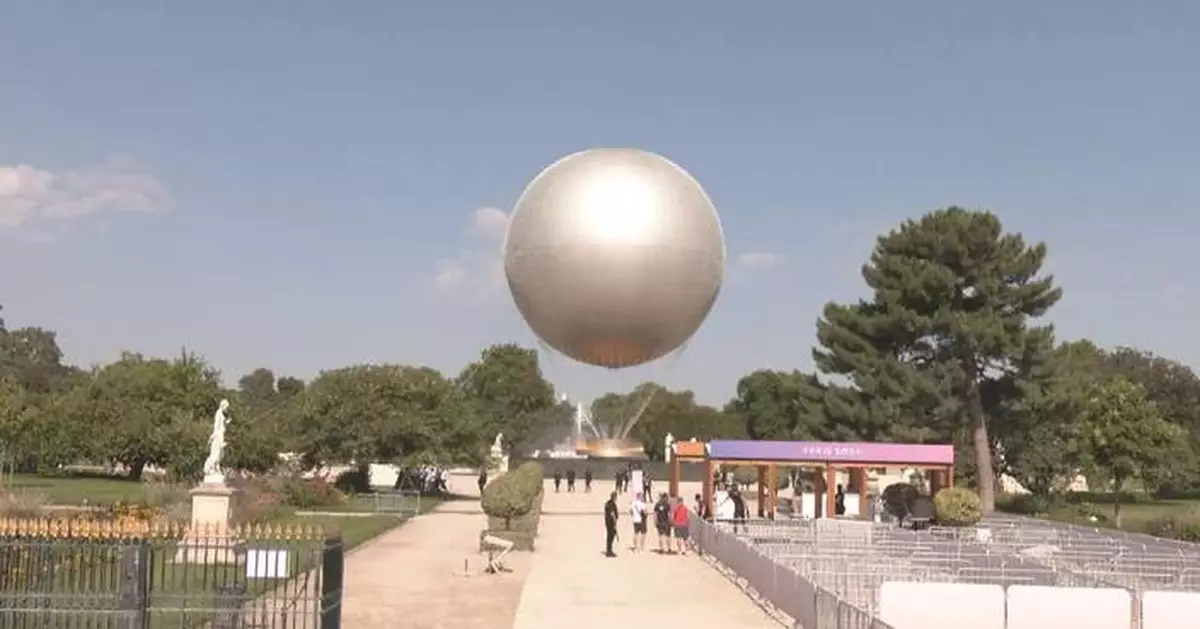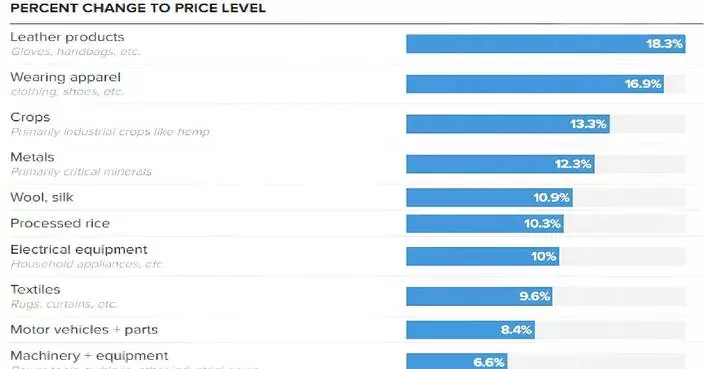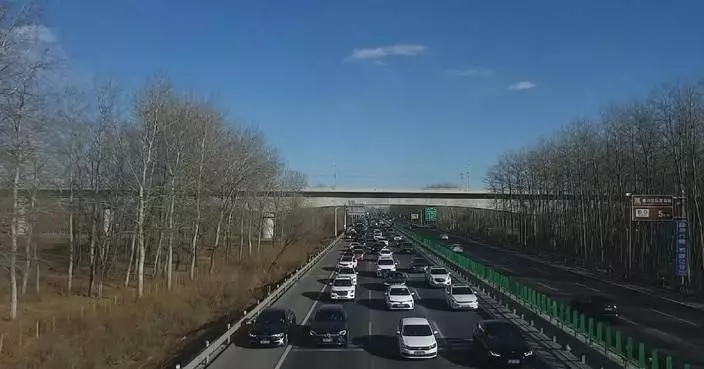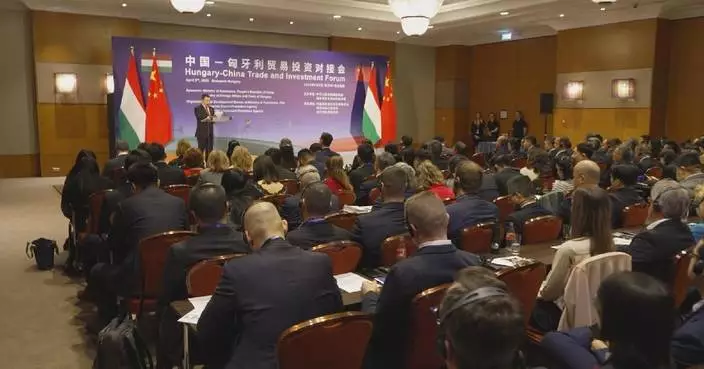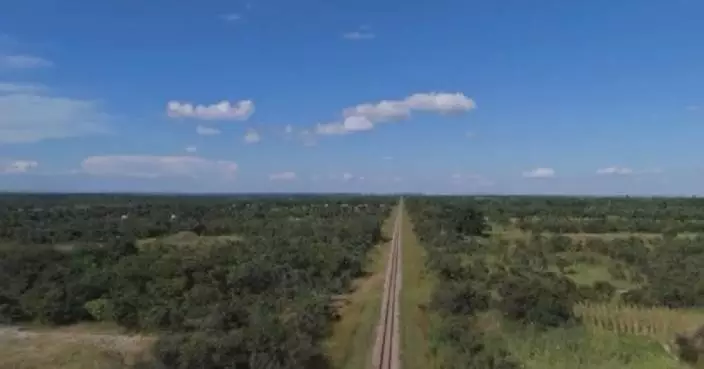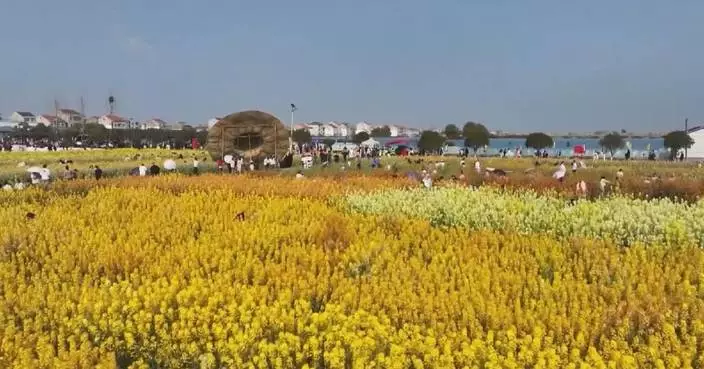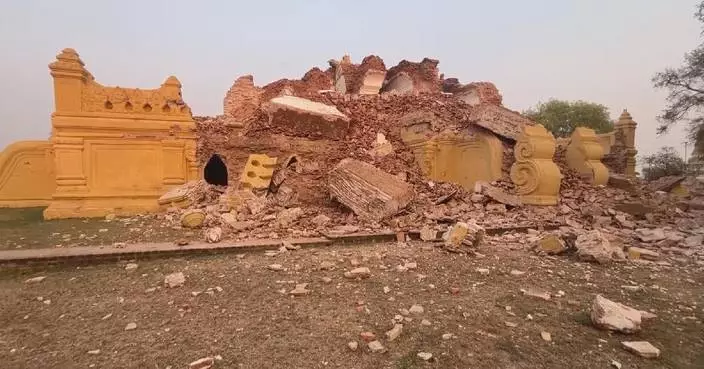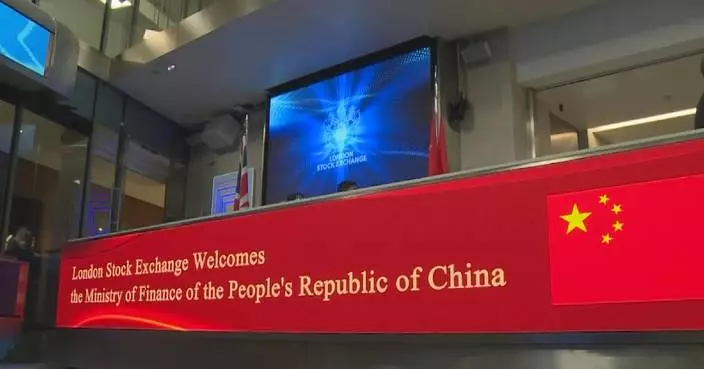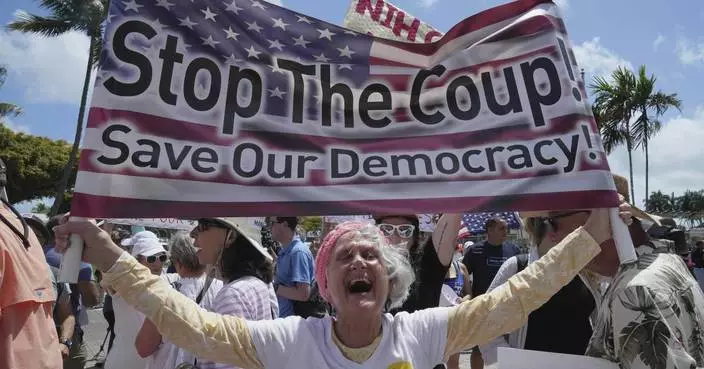With the Olympic Games underway, the sporting spirit is high in Paris, enticing residents and visitors to take a jog along the city's Historical Axis.
The Historical Axis runs through some of Paris’s most celebrated landmarks and squares, many of which are currently adorned with Olympic flair. Along the route are the Louvre with its Glass Pyramid, the Arc de Triomphe, the Place de la Concorde with its Egyptian obelisk, and the Avenue des Champs-Elysees with the Grande Arche at its extended end, altogether providing a unique coming-together of the past and present, blending history and modernity.
In a charming jog-along interview, Julien Gaudfroy, a French performer and musician who has lived in China and has even performed comedic routines in fluent Chinese, introduced his country's famous capital to a China Central Television reporter as the pair embarked on a delightful morning run.
Paris's axis runs east-west. Joggers can start from the forecourt of the Paris City Hall, which serves as the starting point for the marathon at the Paris Olympics.
Jogging along the axis from the City Hall, one encounters the Louvre where the Glass Pyramid is located. The structure, designed by Chinese-American architect I. M. Pei, has become an integral part of the city’s landscape, despite initial resistance to its modern style.
Entering the central Tuileries Garden, visitors cannot miss the spectacular Olympic cauldron balloon surrounded by flocks of tourists where the Olympic flame was lit. The garden, with its lakeside chairs, exudes a relaxing atmosphere.
"You wouldn't normally see this view. The 2024 Paris Olympics bring this unique scene. The Tuileries Garden, together with the Louvre, has become part of it," said Gaudfroy.
Adjacent to the garden is the Place de la Concorde, where the Luxor Obelisk stands. The obelisk was brought to France as a gift in 1830 from Luxor in Egypt.
The jogging route ends at the Grande Arche, a monument and building in the business district of La Défense, which is surprisingly filled with artistic flair and numerous sculptures.
"The end of the axis is Grande Arche, or the new Arc de Triomphe. Along the way, we have seen the two arches, which echo each other," Gaudfroy said.
After more than 10 kilometers of jogging, one can head to the Market of the Red Children, which offers a variety of seasonal fruits, vegetables, seafood, and cheeses.
"The market has a unique charm. It has this lively atmosphere. Look at these walls behind us, these restaurants, and the handwritten menus. It's very Parisian," said the French performance artist.
As American writer Ernest Hemingway once wrote, "If you are lucky enough to have lived in Paris as a young man, then wherever you go for the rest of your life, it stays with you, for Paris is a moveable feast."
The Olympic Games offer the world a special edition of Paris, welcoming visitors from all over the globe to explore the ancient city's blend of tradition and modernity.

Jogging along Paris's historical axis offers unique experience for Olympic fans
Vibrant intangible cultural heritage activities and time-honored folk performances have unfolded across China to mark the millennium-old Qingming Festival.
During the Qingming Festival -- also known as Tomb-Sweeping Day -- which dates back over 2,500 years, it is traditional for Chinese people to return to their hometowns to pay respects to their ancestors and deceased loved ones. This year, the festival fell on Friday.
In Xiangxi Tujia and Miao Autonomous Prefecture, located in central China's Hunan Province, local ethnic minority communities not only sweep graves to pay tribute to their individual ancestors but also hold a grand singing celebration to honor their shared ancestors.
On Friday, the annual singing event during the Qingming Festival was held in Jishou, a county-level city in the prefecture. The Miao people living in the city and its neighboring areas gathered on the mountain and by the river, wearing exquisite festive attire, to commemorate their ancestors and enjoy family reunions with melodious singing.
"As long as there are people at the event who are listening attentively and still remember the melody, our culture will never be lost," said Gong Xiangyuan, a performer.
The event was inscribed on list of provincial-level intangible cultural heritage in Hunan in 2006. Since then, the gathering has become more vibrant, with various performances added to the commemoration.
In Xinshi, an ancient water town in east China's Zhejiang Province, a Silkworm Flower Temple Fair opened on Friday. The event is one of the most representative folk customs during the Qingming Festival in this silk-producing province, held to pray for favorable weather and a bountiful harvest.
Amid a bustling sedan chair parade, "silk blossom fairies" adorned in traditional attire scattered flowers and candies to the crowd, symbolizing farmers' hopes for a prosperous silk season.
"It's my first time attending. It gave me a chance to directly learn about my hometown's silkworm culture," said Ji Leyi, a visitor.
This year's temple fair also featured an innovative robotic dog show, wowing visitors with a striking fusion of traditional folklore and modern technology.
In Hua'an County of Zhangzhou City, in east China's Fujian Province, a carnival-like parade took place around a typical Tulou--a Hakka earthen building with a history spanning over 200 years. The energetic Yingge dance, which blends opera, dance, and martial arts, further heightened the festive atmosphere.
"The local people are involved, and there are many visitors from out of town. I'm also participating as a visitor, filming the experience," Lei Lanfang said.
The picturesque Wujiang Village in Zunyi City, southwest China's Guizhou Province, offered holidaymakers the chance to learn traditional crafts and create their own unique souvenirs. Visitors could dye a blue-and-white dress, assemble a festive lantern or a bamboo-framed paper kite, and handcraft herbal paper with freshly picked flowers.

Vibrant intangible cultural heritage activities held across China to mark Qingming Festival



